Best drum triggers 2025: The hybrid drumming add-ons to give your acoustic kit an electronic twist
Everything you need to know about triggering, plus the best drum triggers from Roland, ddrum, Yamaha and others
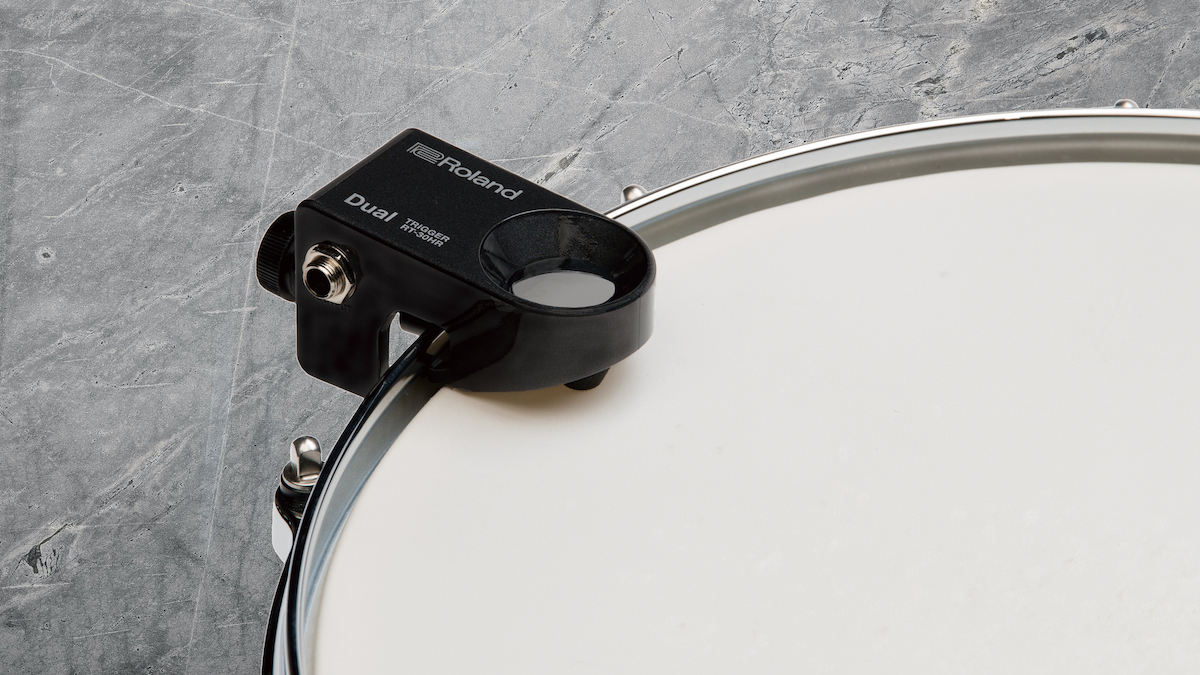
The last decade has presented drummers with an almost overwhelming number of options for hooking up their acoustic drum kit to an electric sound source. However, the humble drum trigger is still favoured by many percussionists. What’s so good about them and which model is right for your particular set-up? To help you make the right purchase, we’ve put together a guide to the best drum triggers you can buy today.
Many of you will be asking: ‘Why would I bother with a drum trigger when I can use a dedicated rubber or mesh pad?’ There are a number of reasons why many drummers swear by drum triggers. They can be very handy if you’re looking to lay down a seamless handclap on top of a backbeat, for example, or if you want the aesthetics of an acoustic kit but the flexibility of being able to generate your drum sound electronically.
Drum triggers aren’t just for function bands or hot-shot session pros, either. In fact, metal drummers looking for immediate attack from their kick drums, toms and snares have been using drum triggers to replace the sound of their kit for decades.
So, whether you’re looking to rattle the audience’s chests with a sub-bass kick drum, cut through a wall of electric guitars with pinpoint precision, or simply minimise the number of auxiliary items hanging from your kit, check out our pick of the best drum triggers for any budget.
If you'd like to read more buying advice about the best drum triggers, click the 'buying advice' button above. If you'd rather get to the products, keep scrolling.
Best drum triggers: Our top picks
A lot of musicians like to stick with brands they know and love, and for that reason many drummers will set their sights on the Roland RT-30, the Yamaha DT50 or ddrum’s Acoustic Pro series. All of these resemble what most of us think of when we picture an acoustic drum trigger, and you can’t go far wrong with any of them. Meanwhile, Sunhouse’s Sensory Percussion puts the future in your hands right now with some mind-blowing capabilities, if you’re willing to take the plunge into the brand’s ecosystem.
At the more affordable end of the price spectrum, ddrum’s Red Shot and the Pintech RS-5 each offer a great solution that enables you to fit out your entire kit. A special mention should also go to the Roland RT-MicS, which, while limited as a physical trigger, could be the perfect all-in-one solution if you want a way of miking, triggering and managing your sounds without having to buy a full trigger/module setup.
Best drum triggers: Product guide
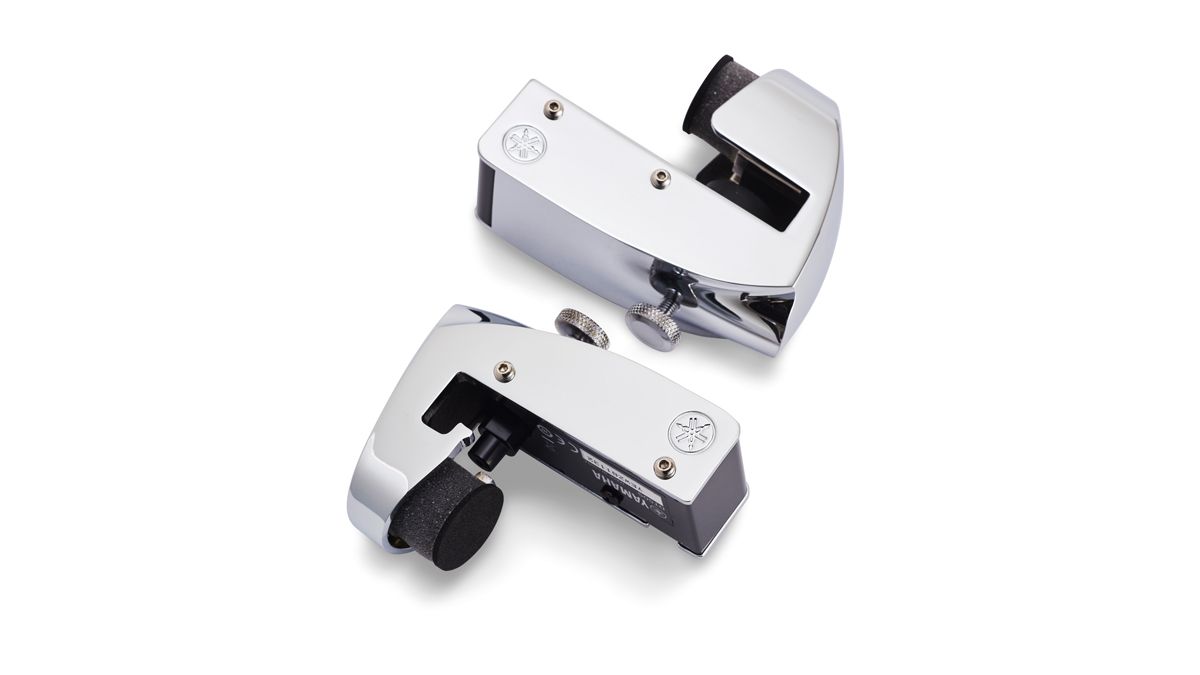
Specifications
Reasons to buy
Reasons to avoid
A few years ago, Yamaha’s acoustic trigger catalogue amounted to some very basic units that stuck to the drum head. The DT50 series for snare/tom and bass drums is somewhat more impressive, featuring a super-strong die-cast and chromed housing that will blend into the rest of your hardware, a thumb-screw fastener, a foamed sensor and an output jack for sending your signal to the module.
Essentially, this is Yamaha’s answer to its rivals, and it does everything you’d expect from one of the big boys of electronic/hybrid drumming. It’s a pity there’s no single-zone snare/tom version, but the street price puts the dual-zone DT50S at a similar price to Roland’s single-zone RT-30H.
Read the full Yamaha DT50 review
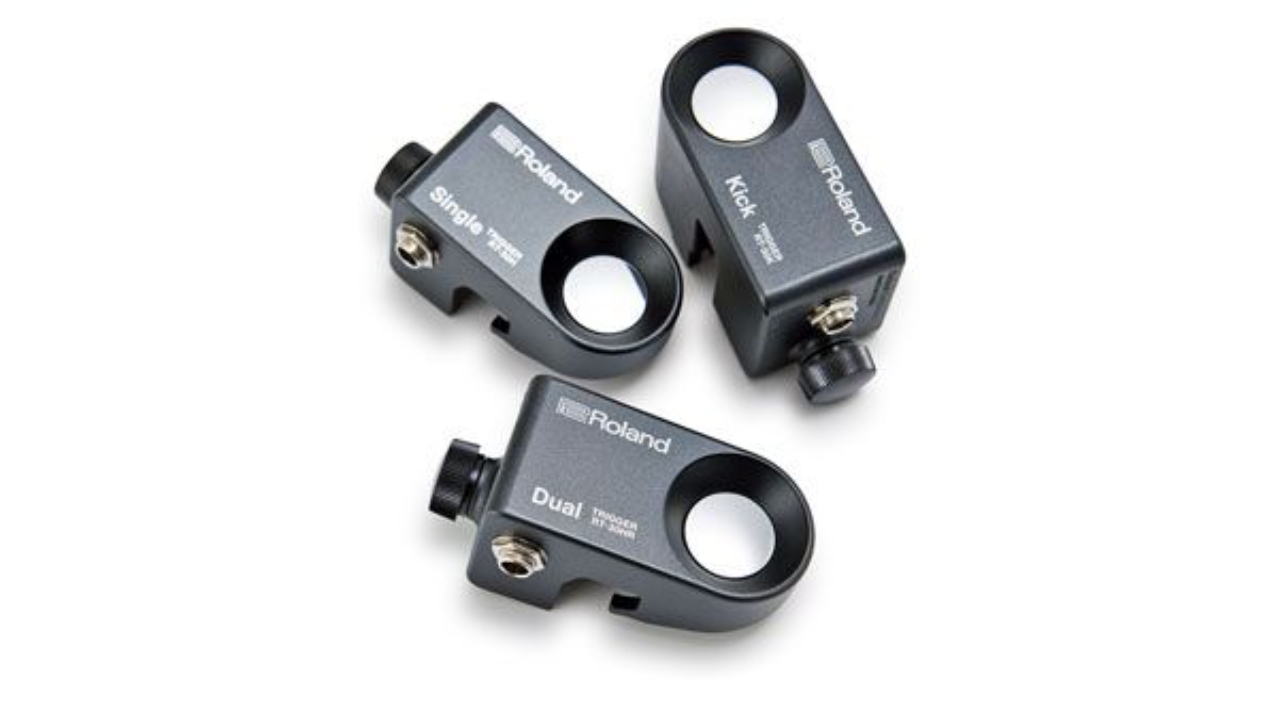
Specifications
Reasons to buy
Reasons to avoid
Roland’s RT-30 series comprises three variants: the single-zone RT-30H (tom) and RT-30K (bass), and the dual-zone RT-30HR (snare). All of them feature a heavy-duty but lightweight ABS plastic housing with a simple thumb-screw attachment for mounting, and use a foam cone to transfer the vibrations from the head to the transducer.
All three of the variants in the RT-30 series feature a less bulky design than Roland’s previous-generation RTs, and this, combined with their simple setup, makes them an excellent choice for those starting out on their drum-triggering journey.
Read the full Roland RT-30 review
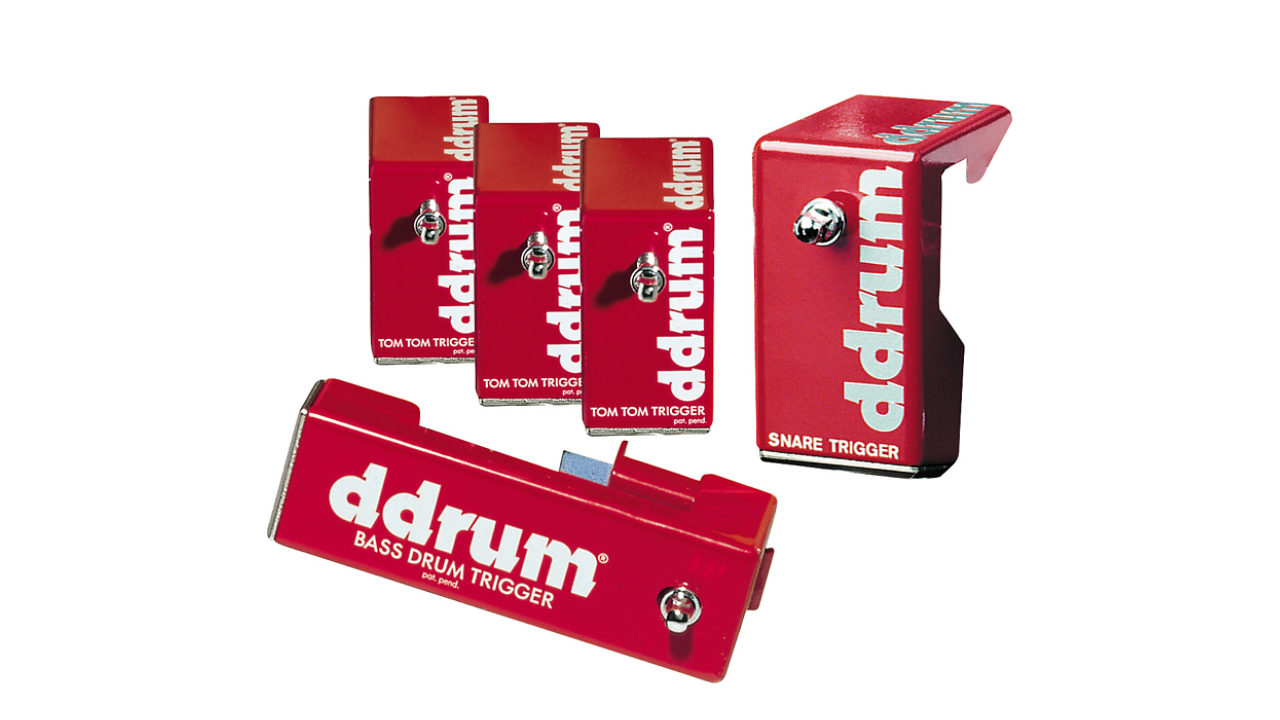
3. ddrum Acoustic Pro
Our expert review:
Specifications
Reasons to buy
Reasons to avoid
ddrum’s triggers are renowned for their fast, responsive triggering and robust durability, and the Acoustic Pro series is no exception. Coming in single-zone (bass, tom) and dual-zone (snare) variants, these red metal rectangles are tough as nails and attach to the drum rim with a drum key bolt – arguably more reliable than a thumb screw but less convenient for quick setups. ddrum also uses an XLR connector for the trigger output, since they are more durable and lock in place.
Unfortunately, a cable isn’t included with any of the Acoustic Pro variants, but you can buy them direct from the manufacturer. Alternatively, you can use any standard-wired third-party XLR-mono jack (for single-zone) or XLR-stereo jack (for dual-zone).
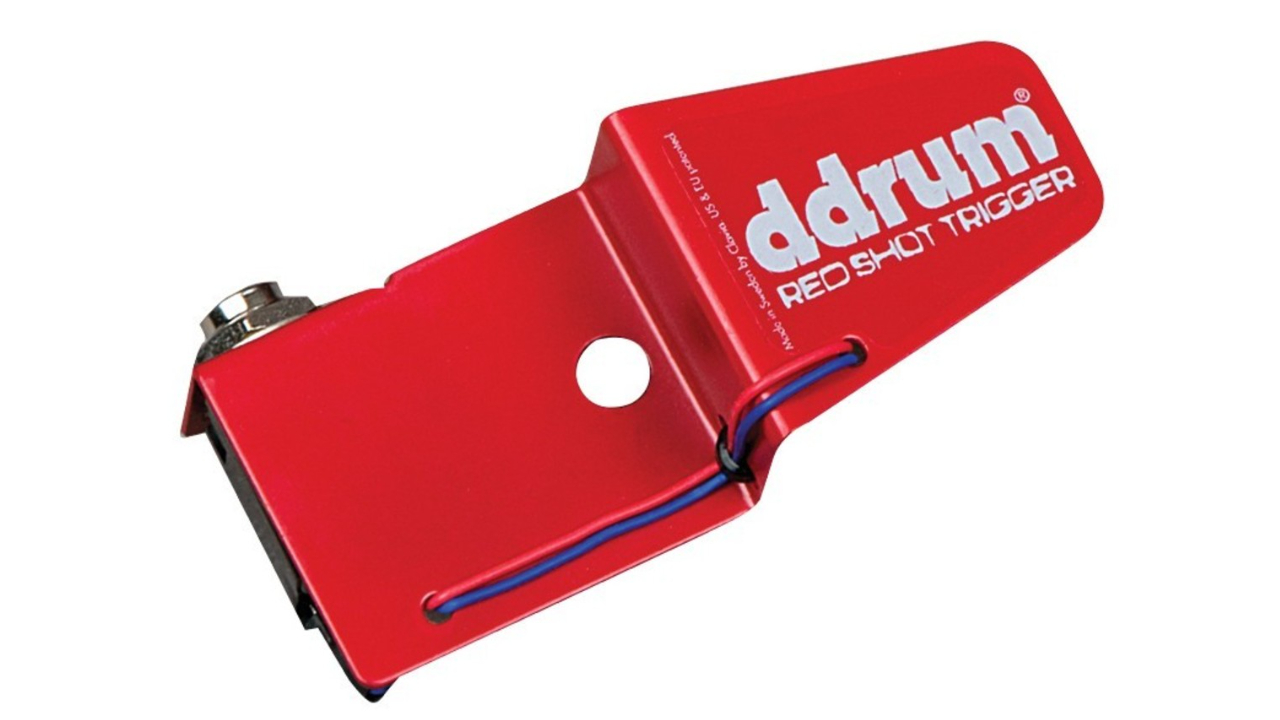
4. ddrum Red Shot
Our expert review:
Specifications
Reasons to buy
Reasons to avoid
If you’d like another route into the ddrum world, take a look at the Swedish company’s Red Shot triggers. These feature the same internal piezo transducer and foam combo as the Acoustic Pro series, but serve it up in a more affordable package. There’s still some protection for the guts of the trigger, courtesy of a metal chassis, and the Red Shot series uses a jack socket rather than an XLR connection.
The tension rod mounting is less convenient if you don’t want a semi-permanent installation, but if you’re triggering all the time then it could be seen as a time saver.
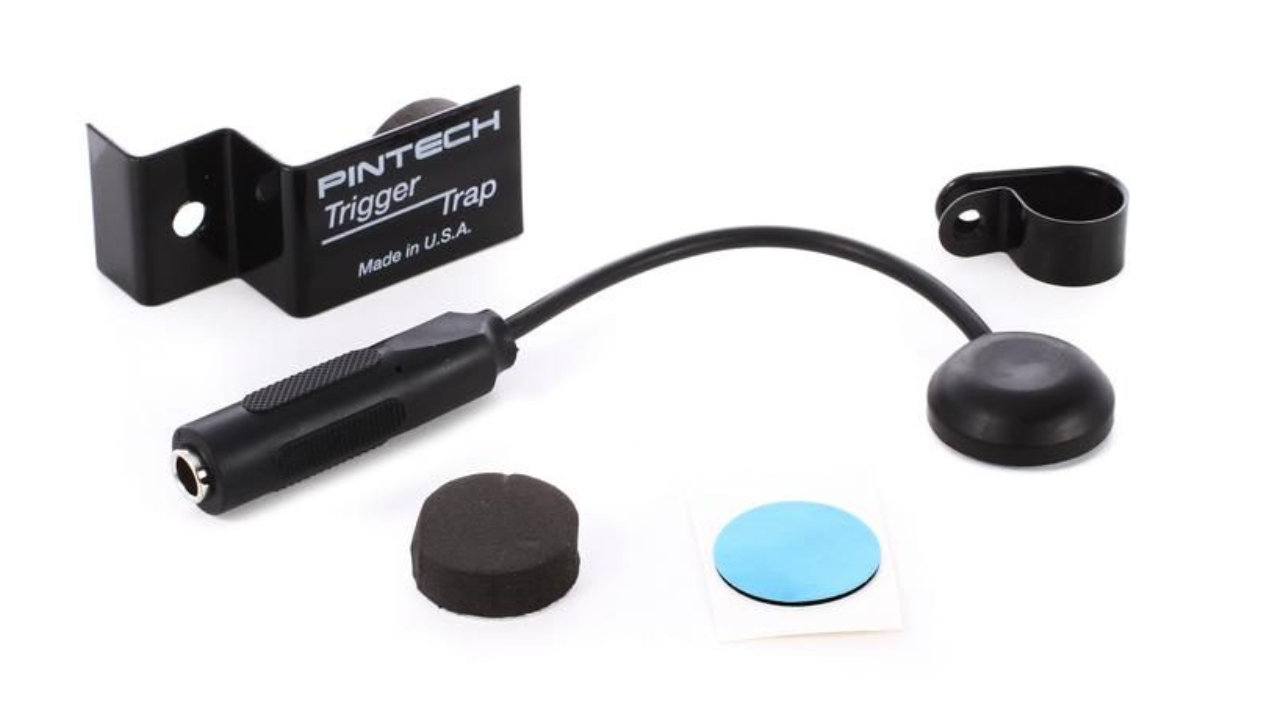
5. Pintech RS-5
Our expert review:
Specifications
Reasons to buy
Reasons to avoid
Pintech has been in the triggering game since the 1980s, and while a lot of the company’s focus is now on more-permanent acoustic/electronic conversions and pad solutions, it does still offer some basic removable acoustic triggers.
On its own, the Pintech RS-5 is the most basic kind of adhesive trigger you can get. But it’s also available with the Trigger Trap – a metal plate to secure the transducer in place and offer some protection. It resembles the ddrum Red Shot, shares the same sort of tension rod mounting and comes in a choice of red or black.
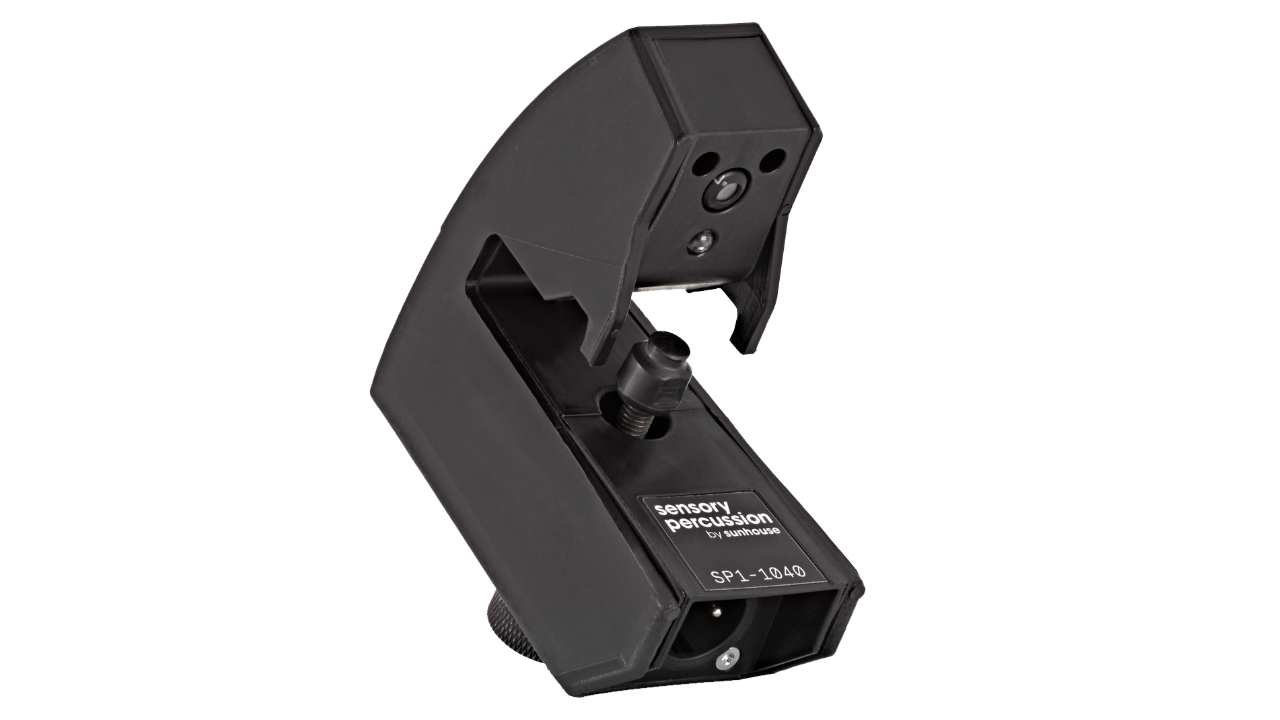
6. Sunhouse Sensory Percussion
Our expert review:
Specifications
Reasons to buy
Reasons to avoid
While the Sensory Percussion triggers from Sunhouse look similar to other triggers here, they’re quite different. Sensory percussion is an entirely proprietary system that requires a computer and audio interface rather than a drum module.
The triggers work via a non-contact sensing system and are plugged into an interface. This enables them to talk to the Sensory Percussion software – which acts like a module/sampler – on your computer. Sound complex? It is a bit, but the upshot is a completely unique system that can turn an acoustic drum into a 10-zone surface using just one trigger.
The software uses machine learning to designate the different zones based on how you play, and also includes some very clever features to eliminate crosstalk between the zones. It’s an expensive investment and will require some serious screen time to get the most out of it, but the results are quite amazing.
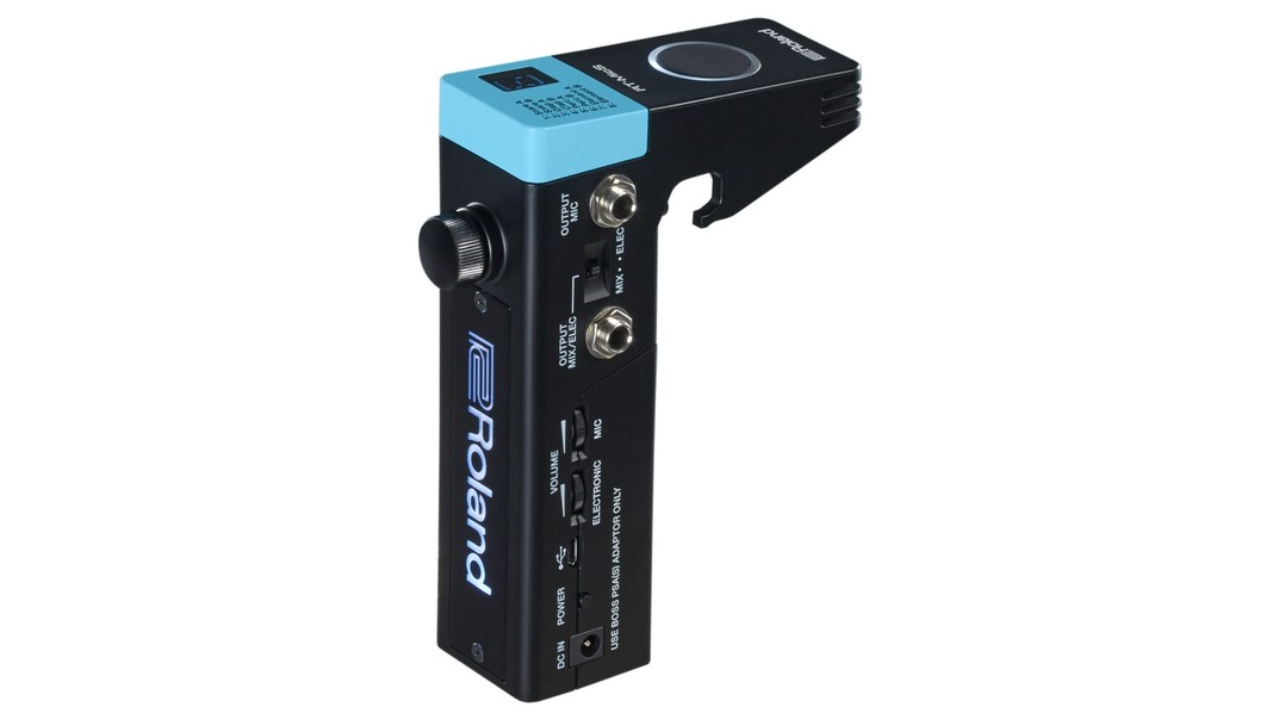
7. Roland RT-MicS
Our expert review:
Specifications
Reasons to buy
Reasons to avoid
As a trigger, Roland’s RT-MicS offers a simple, single zone. However, it’s actually a lot more than just a trigger, providing a built-in set of sounds, the ability to import your own samples, along with a microphone to pick up the sound of your acoustic drum. On the side, there are controls for blending the electronic and mic sounds for sending to a PA speaker, or you can choose to set independent outputs for both signals as audio. The whole lot can be powered by a nine-volt battery, or you can use a power supply.
There are some drawbacks: there’s no ‘kick’ version, no option for outputting the trigger signal, and, at 6.25 inches from top to bottom, it’s going to be deeper than some drums. But as a simple, all-in-one solution, it’s an innovative design that will appeal if you’re after a way of triggering from one drum.
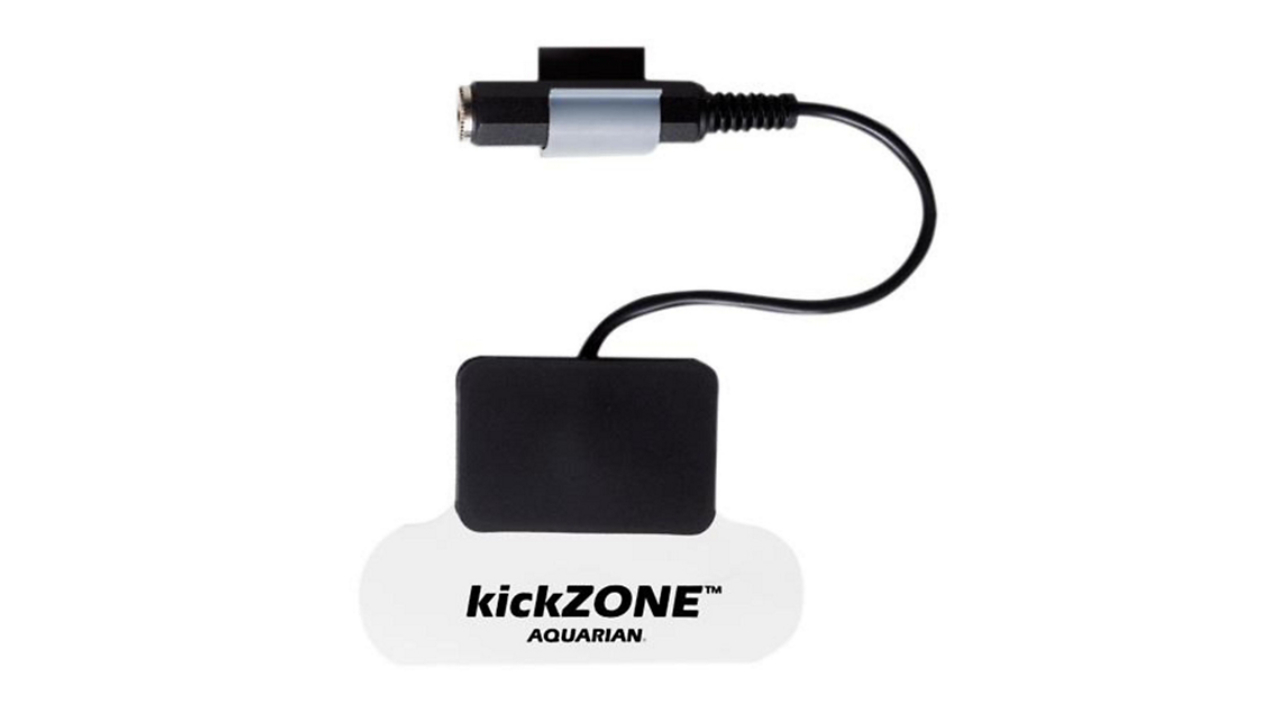
8. Aquarian kickZONE
Our expert review:
Specifications
Reasons to buy
Reasons to avoid
Triggers don’t come much simpler than the Aquarian kickZONE, which attaches directly to the head of your drum with an adhesive backing. A breakout cable is attached, with a jack socket at the other end for you to connect a longer cable between the trigger and module, and it comes with a self-adhesive bracket to hold the socket in place, too.
The technology is a bit dated now, and there are numerous affordable products available these days that include a housing. However, we wouldn’t rule this out as an easy way of experimenting with triggers, particularly if you want to attach it to a less than conventional surface.
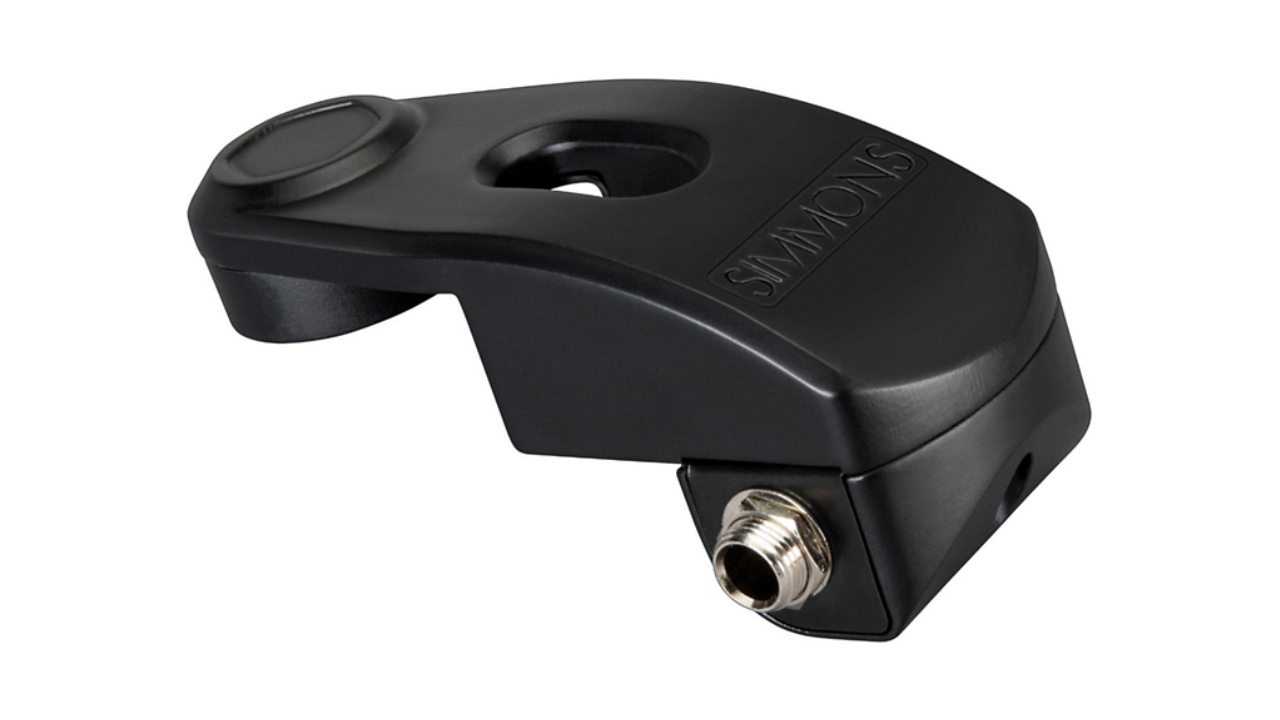
9. Simmons ST1
Our expert review:
Specifications
Reasons to buy
Reasons to avoid
Remember Simmons, who made those hexagonal drum pads in the 1970s/80s? Well, the brand is still going and its single-zone ST1 offers a no-fuss way to start triggering. At $20/£14/€17 a pop, you can outfit your snare and toms for a reasonable price, while the nylon casing still gives the piezo some protection from your sticks.
Like ddrum’s Red Shot, it mounts to the drum via a tension rod, so will require de-tuning when you take it on and off. However, the slim design means you might not mind it being attached more constantly.
Best drum triggers: Buying advice
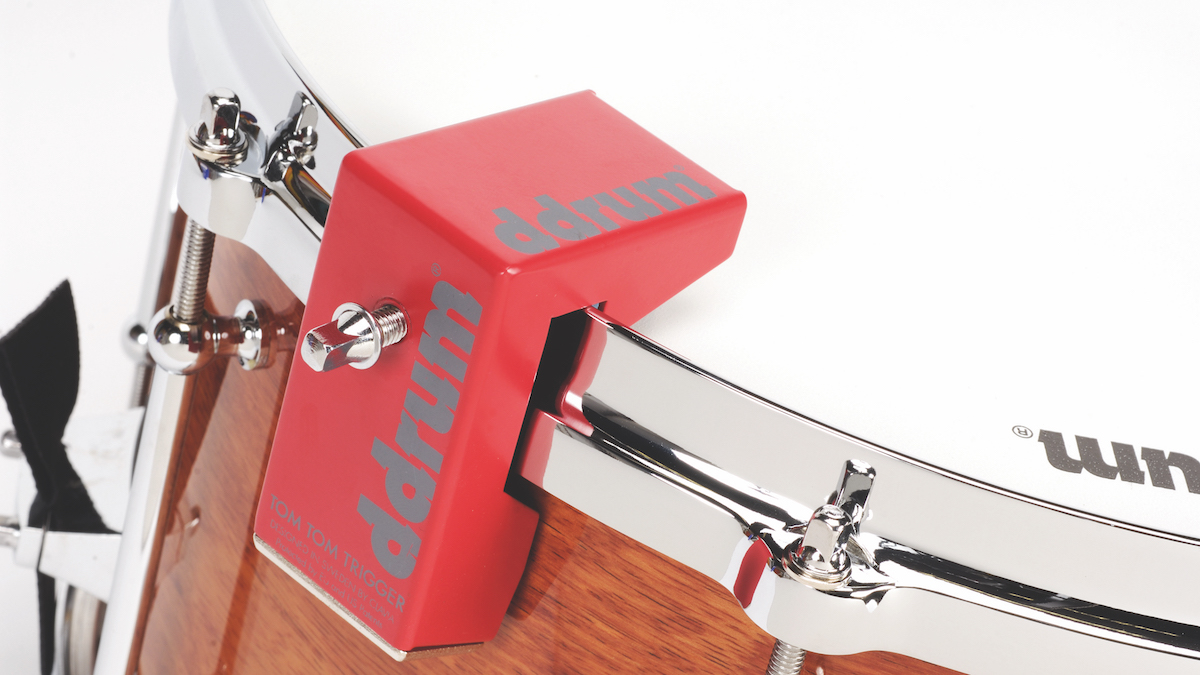
If you’re planning to start using electronics in your kit, it’s worth learning the basics of what’s actually going on. There’s more to it than we have space for here, but in a nutshell a drum trigger works by placing a transducer on the playing surface of your kit. The vibrations caused by your strike are picked up and turned into an electronic pulse, which is then fed to a module (brain) with trigger inputs. From here, you assign a sound in the module, which is played (or triggered) every time it detects the incoming pulse.
Triggers can be as simple as a piezo transducer attached to the head. More common, though, are triggers that include their own housing and mounting solutions, clamping to the rim of the drum for secure positioning and offering enough protection from misjudged stick hits.
The first thing to look for when choosing from the best drum triggers is how many zones the trigger offers. The most common acoustic triggers are single-zone (mono) or dual-zone (stereo). A single-zone trigger will interpret hits from a single playing surface, while a dual-zone trigger will be able to detect hits from the head and rim of the drum independently. When sent to a module, you’ll be able to assign a different sound (or layers of sounds, depending on your module’s capabilities) to each surface.
Your module may also determine the kind of trigger you opt for. For example, a Roland TM-2 has two physical trigger inputs, both dual-zone. But by splitting the inputs with a simple ‘Y’ cable, you can use four single-zone triggers on different drums, enabling you to place triggers across your whole kit rather than having to think in pairs of zones.
Find out more about how we test music gear and services at MusicRadar.
Related buyer's guides
MusicRadar's got your back
- Best electronic drum sets: E-kits for every playing level and budget
- Best drumsticks: wooden and synthetic drumsticks for beginners to pros
- Lay it down with the best bass drum pedals
- 5 of the best low volume cymbals for quieter drum practice
- Hear yourself loud and clear: The best headphones for drummers
- Go hybrid with the best electronic drum pads
- The best compact drum kits for small spaces
Get the MusicRadar Newsletter
Want all the hottest music and gear news, reviews, deals, features and more, direct to your inbox? Sign up here.

I'm a freelance member of the MusicRadar team, specialising in drum news, interviews and reviews. I formerly edited Rhythm and Total Guitar here in the UK and have been playing drums for more than 25 years (my arms are very tired). When I'm not working on the site, I can be found on my electronic kit at home, or gigging and depping in function bands and the odd original project.